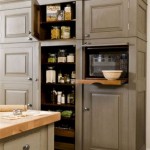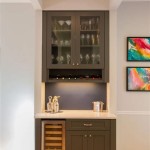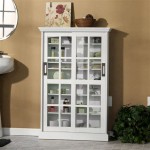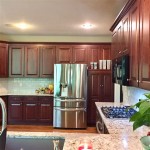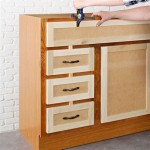How Much Does Kitchen Cabinet Paint Cost Per Square Foot?
Repainting kitchen cabinets is a popular and relatively cost-effective way to revitalize a kitchen's appearance. Instead of completely replacing cabinets, which can be a significant investment, a fresh coat of paint can drastically alter the room's aesthetic. Understanding the costs associated with this project, specifically the price per square foot, is crucial for budgeting and making informed decisions. This article will delve into the various factors influencing the cost of painting kitchen cabinets per square foot, providing a comprehensive overview to aid homeowners in planning their renovation.
The cost to paint kitchen cabinets per square foot is not a fixed number. It varies depending on several factors, including the type of paint used, the complexity of the cabinet doors, the preparation work required, and whether the project is a DIY endeavor or handled by professional painters. Furthermore, regional differences in labor costs and material prices can also impact the overall expense.
Broadly speaking, homeowners can expect to pay anywhere from $3 to $12 per square foot to have their kitchen cabinets professionally painted. This range is quite wide, illustrating the diverse factors that influence pricing. DIY projects can potentially reduce costs significantly, primarily by eliminating labor expenses. However, DIY painting requires time, skill, and the right tools to achieve a professional-looking finish.
Key Cost Factors: Paint Type and Quality
The type and quality of paint selected for the kitchen cabinet project significantly impact the overall cost. Different paint types possess varying levels of durability, ease of application, and aesthetic appeal. Acrylic latex paints and oil-based paints are two common choices, each with distinct advantages and disadvantages.
Acrylic latex paints are water-based and generally considered a more environmentally friendly option. They are known for their ease of application, quick drying time, and low odor. Acrylic latex paints also offer good color retention and are less prone to yellowing over time, a common issue with oil-based paints. They are also easier to clean up, requiring only soap and water. Higher-quality acrylic latex paints offer excellent durability and adhesion, making them suitable for kitchen cabinets that are frequently exposed to moisture and grease.
Oil-based paints, on the other hand, are known for their durable, hard finish. They provide excellent resistance to scratches and stains, making them a good choice for high-traffic areas like kitchen cabinets. However, oil-based paints have a longer drying time, emit strong odors, and require mineral spirits for cleaning. They are also more prone to yellowing over time, particularly in areas with limited sunlight exposure. Due to stricter environmental regulations, oil-based paints are becoming less common and are often more expensive than acrylic latex paints.
Beyond the base type of paint, the quality of the paint also plays a crucial role. Higher-quality paints often contain more pigments and resins, resulting in better coverage, durability, and a smoother finish. While they may be more expensive upfront, higher-quality paints can ultimately be more cost-effective in the long run, as they require fewer coats and last longer before needing to be repainted.
The price of paint can range from $30 to $100 per gallon, depending on the type and quality. This cost directly translates to the price per square foot. When calculating the material cost, it is important to factor in the amount of paint needed to cover the total surface area of the cabinets, accounting for multiple coats as necessary.
Surface Preparation and Labor Costs
The preparation required before painting the cabinets is a critical factor that significantly influences the overall cost. Proper surface preparation ensures that the paint adheres correctly and results in a smooth, long-lasting finish. This process typically involves cleaning, sanding, priming, and potentially repairing any damages to the cabinet surfaces.
Cleaning the cabinets is the first step in the preparation process. This involves removing grease, dirt, and grime that can prevent the paint from adhering properly. A degreasing cleaner is often used for this purpose. Sanding the cabinet surfaces is also essential to create a slightly rough texture, providing a better surface for the paint to grip onto. Sanding removes any existing gloss and helps to smooth out imperfections. The level of sanding required depends on the existing finish of the cabinets. For cabinets with a glossy finish, more extensive sanding may be necessary.
Priming is another crucial step that should not be overlooked. Primer helps to seal the cabinet surface, creating a uniform base for the paint. It also improves paint adhesion and prevents stains from bleeding through the finish. The type of primer used depends on the type of paint being used and the material of the cabinets. Oil-based primers are often used for cabinets made of wood, while latex primers are suitable for primed surfaces or those previously painted with latex paint.
In addition to these standard preparation steps, any damages to the cabinets, such as cracks, dents, or chips, need to be repaired before painting. This may involve filling the damages with wood filler or patching compound and then sanding the repaired areas smooth. The complexity and extent of the preparation work can significantly impact the labor costs associated with the project.
If hiring professional painters, the labor cost will be a significant portion of the overall expense. Professional painters typically charge by the hour or by the project. Hourly rates can range from $50 to $100 per hour per painter, depending on the location and the experience of the painter. Project-based pricing is more common for cabinet painting, as it allows for a more predictable cost. The project-based cost will take into account the total surface area of the cabinets, the complexity of the preparation work, and the number of coats of paint required.
DIY painting can eliminate labor costs, but it requires a significant time investment and a certain level of skill. Homeowners should carefully consider their abilities and the time commitment involved before deciding to DIY the project. If the cabinets are in poor condition or if a professional-looking finish is desired, hiring professional painters may be the best option.
Cabinet Style and Complexity
The style and design complexity of the kitchen cabinets also play a significant role in determining the painting cost per square foot. Cabinets with intricate details, raised panels, or decorative moldings require more time and effort to paint than simple, flat-panel cabinets. More complex designs have more surface area and crevices, increasing the labor time needed for preparation, painting, and ensuring a smooth, even finish.
Cabinets with raised panel doors, for example, require more meticulous painting techniques to ensure that the paint reaches all the recessed areas. This often involves using smaller brushes and more coats of paint. Similarly, cabinets with decorative moldings or trim require careful masking and detailing to avoid paint bleeding and ensure clean lines. The more detail a cabinet has, the more time it will take to properly prepare and paint, which directly translates to higher labor costs.
The number of cabinets in the kitchen also impacts the overall cost. A larger kitchen with more cabinets will naturally require more paint and more labor time than a smaller kitchen. The layout of the kitchen and the accessibility of the cabinets can also affect the labor costs. Cabinets that are difficult to reach or require special equipment to access may incur additional charges.
Furthermore, whether the cabinet doors and drawers are removed before painting also affects the cost. Removing the doors and drawers allows for easier access to all surfaces and can result in a more professional-looking finish. However, it also adds to the labor time, as each door and drawer needs to be carefully removed, labeled, and reinstalled after painting. Some homeowners may choose to paint the cabinets without removing the doors and drawers to save on labor costs, but this can be more challenging and may not result in as high-quality of a finish.
In summary, the complexity of the cabinet style and the number of cabinets in the kitchen are significant factors that influence the cost of painting kitchen cabinets per square foot. Homeowners should carefully consider these factors when budgeting for their cabinet painting project and when obtaining quotes from professional painters.

Cost To Paint A Kitchen Average Fixr

Cost To Paint Kitchen Cabinets Cabinet Painting Fixr

How Much Does It Cost To Paint Kitchen Cabinets In 2025

How Much Does It Cost To Paint Kitchen Cabinets In 2025

Average Cost To Paint Kitchen Cabinets 2024 Easy Guide

Cost To Paint Kitchen Cabinets Cabinet Painting Fixr

Average Cost To Paint Kitchen Cabinets 2024 Easy Guide

How Much Does It Cost To Paint Kitchen Cabinets In 2025

How Much Does It Cost To Paint Kitchen Cabinets 2025

How Much Does It Cost To Paint Kitchen Cabinets Angi
Related Posts


